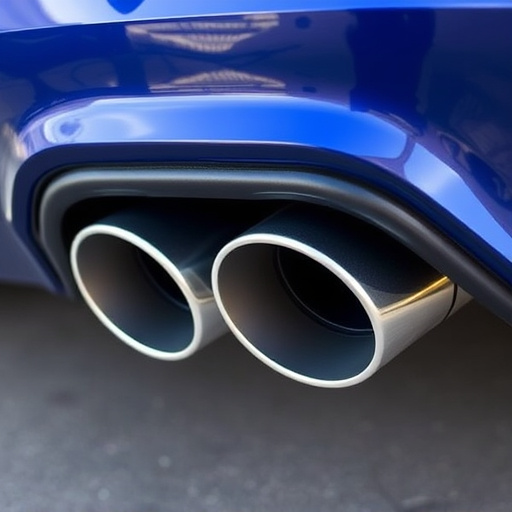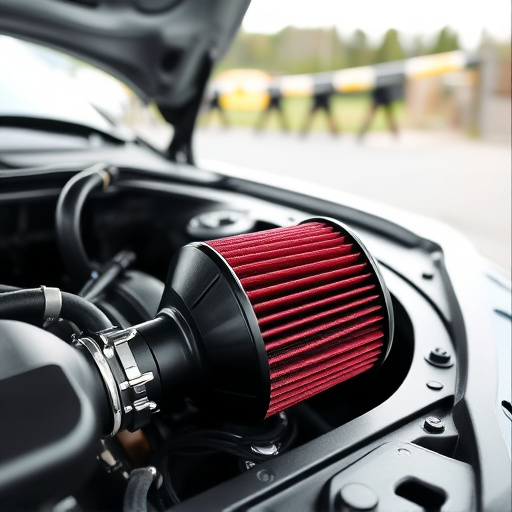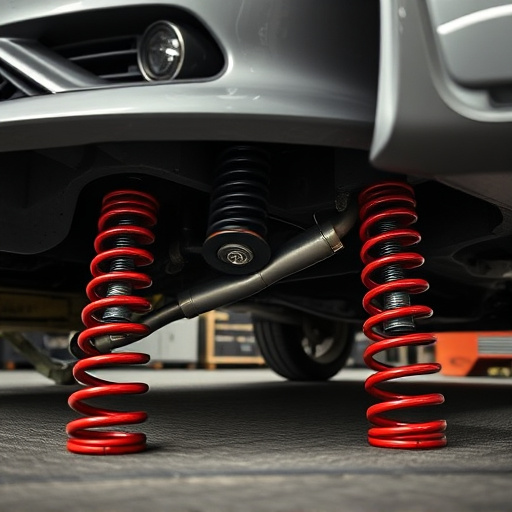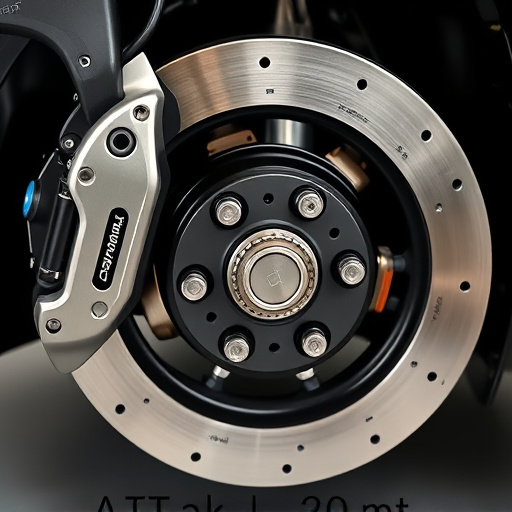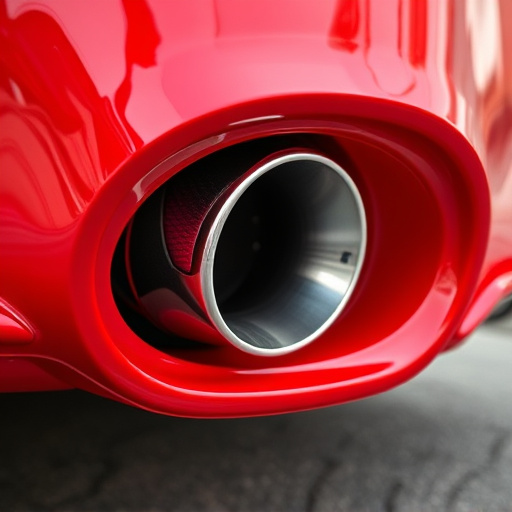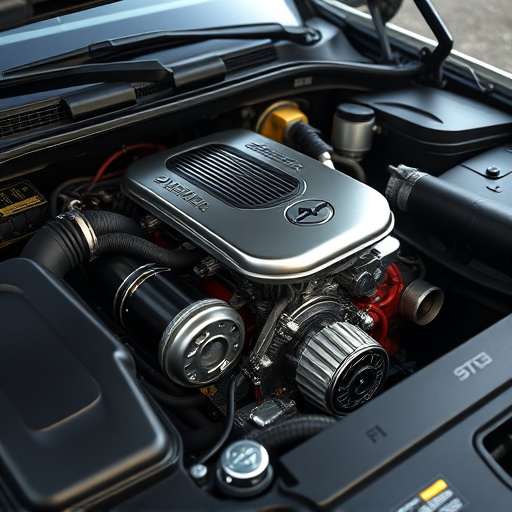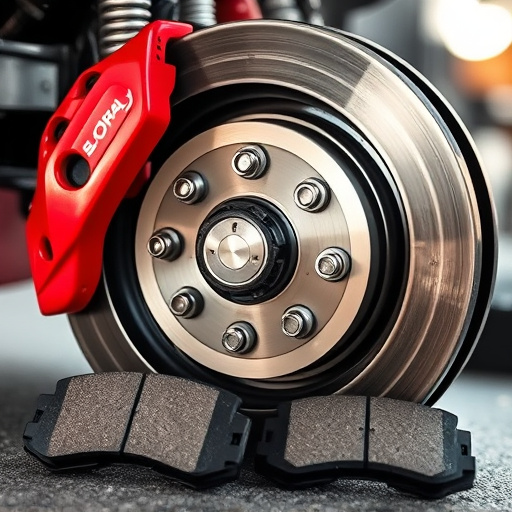A dual exhaust system minimizes backpressure in internal combustion engines, boosting performance in high-rev conditions and enhancing fuel efficiency. By splitting exhaust gases into two paths, it allows for smoother combustion, increased power output, quicker gas expulsion for enhanced cooling, and noise reduction through mufflers while maintaining the desired sound profile in performance vehicles, contributing to overall vehicle dynamics and environmental compliance.
A dual exhaust system is a game-changer in automotive engineering, offering an efficient solution to a critical issue: engine backpressure. This innovative design provides a deeper understanding of internal combustion dynamics and its impact on performance. By separating exhaust gases, dual exhaust systems enhance engine efficiency, improve throttle response, and reduce backpressure, resulting in increased power output. This article delves into the science behind these systems, highlighting their advantages and the precise manner in which they optimize vehicle performance.
- Understanding Engine Backpressure and Its Impact
- Advantages of Dual Exhaust Systems
- How Dual Exhausts Reduce Backpressure Efficiently
Understanding Engine Backpressure and Its Impact

Backpressure, a term often associated with fluid dynamics, also plays a significant role in internal combustion engines. In simple terms, it’s the resistance to exhaust gases escaping from the engine. This is a crucial aspect to understand as it directly impacts the engine’s performance and efficiency. High backpressure can lead to reduced power output and even cause damage to the engine over time.
In an engine, the burning of fuel creates gases that need to exit through the exhaust system. If this flow is hindered due to restrictions or inefficient design, backpressure builds up. This is where a dual exhaust system comes into play, offering a solution by providing two separate paths for exhaust gases to escape, thus significantly reducing backpressure and improving engine performance, especially in high-performance vehicles equipped with suspension components and powerful performance brakes.
Advantages of Dual Exhaust Systems

Dual exhaust systems offer several advantages that significantly enhance engine performance and overall vehicle efficiency. One of the key benefits is the reduction of engine backpressure, allowing for smoother combustion and improved power output. This is particularly advantageous in vehicles equipped with high-performance parts, as it enables a more optimal fuel burn and increased acceleration.
Furthermore, these systems contribute to better cooling by facilitating faster exhaust gas expulsion, which can be especially beneficial during intense driving sessions or races. The inclusion of exhaust mufflers also plays a crucial role in reducing noise pollution, providing a quieter ride experience without compromising the powerful sound often associated with high-performance vehicles.
How Dual Exhausts Reduce Backpressure Efficiently
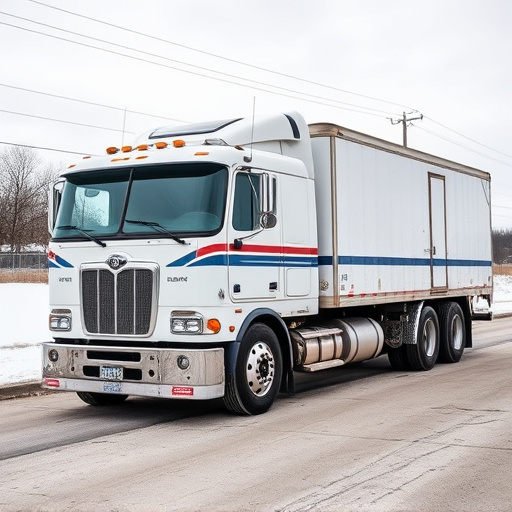
A dual exhaust system’s primary role is to reduce engine backpressure efficiently, enhancing overall performance. Unlike a single exhaust setup, which combines and directs all gases in one pipe, dual exhausts split the exhaust flow into two separate paths. This division allows for better gas flow, as each pipe handles a reduced volume of gases, thereby decreasing resistance. The strategy is particularly effective in mitigating backpressure during high-rev conditions when engines produce significant power.
Moreover, this system incorporates additional components like exhaust mufflers and catalytic converters (cat back exhaust) strategically along each branch. These parts further dampen noise levels while also treating harmful emissions, ensuring both performance and environmental compliance. By efficiently managing exhaust gases, a dual exhaust system contributes to smoother power delivery and can even improve fuel efficiency in certain driving conditions.
A dual exhaust system offers a powerful solution for reducing engine backpressure, providing multiple benefits for vehicles. By splitting exhaust gases into two paths, this system efficiently minimizes backpressure, resulting in enhanced engine performance and improved fuel efficiency. This advanced technology is a game-changer for automotive enthusiasts seeking to optimize their vehicle’s capabilities without compromising on power.




